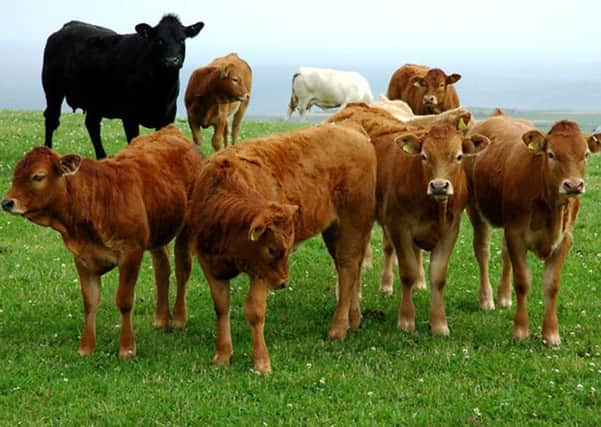Repackaging fears '˜put in perspective' by QMS chief
This article contains affiliate links. We may earn a small commission on items purchased through this article, but that does not affect our editorial judgement.


Responding to media reports that the crime unit of the food watchdog, Food Standards Scotland (FSS), was conducting investigations into meat plants over the possible fraudulent re-packaging of beef from outside the country as Scottish, industry organisations claimed that the story had been sensationalised.
“Our understanding is that the FSS is currently looking into the credibility of one or two claims of poor practice – there is no suggestion of a formal investigation or actual wrong-doing,” said Jim McLaren, chairman of Quality Meat Scotland (QMS).
Advertisement
Hide AdAdvertisement
Hide AdThe line was confirmed by Ian McWatt, director of operations at FSS, who yesterday said that the crime unit regularly received claims from people alleging fraud.
He added: “The unit’s normal process is to carefully consider how credible and robust these claims are and only once credibility is established would an investigation commence.”
QMS said: “It is vital the quality reputation of our beef is not undermined in any way and that any isolated cases of poor practice are quickly identified and firmly dealt with.”
Meanwhile, the annual cattle and sheep enterprise costings produced by QMS for the 2015 marketing year showed an industry struggling with a downturn in prices, although these were offset partially for some by lower input costs.
But launching the report, the organisation’s chief economist, Stuart Ashworth said that looking at the range of performances within the various enterprise showed that those in the top third had tended to maintain or widen their lead over their fellow producers.
As far as the overall picture was concerned, Ashworth pointed out that the 2015 marketing year had stood as a direct counterpoint to the current post-Brexit 2016 season.
“In 2015 we tended to be looking at a falling product price base being offset to some extent by similar drops in input variable costs such as feed, fertilisers and fuel,” he said.
Ashworth pointed out that enterprises where greater use was made of fertilisers and feeds, had fared relatively better during 2015 than more extensive livestock units
Advertisement
Hide AdAdvertisement
Hide AdBut 2016 had seen the pendulum swing the other way in the wake of the EU referendum result, with the fall in the value of the pound seeing the benefits from product prices on the rise being offset by higher input costs.
“However, all else being equal,” said Ashworth. “Halfway through the current trading year we could be looking at a recovery in the margins of the primary producer.”
